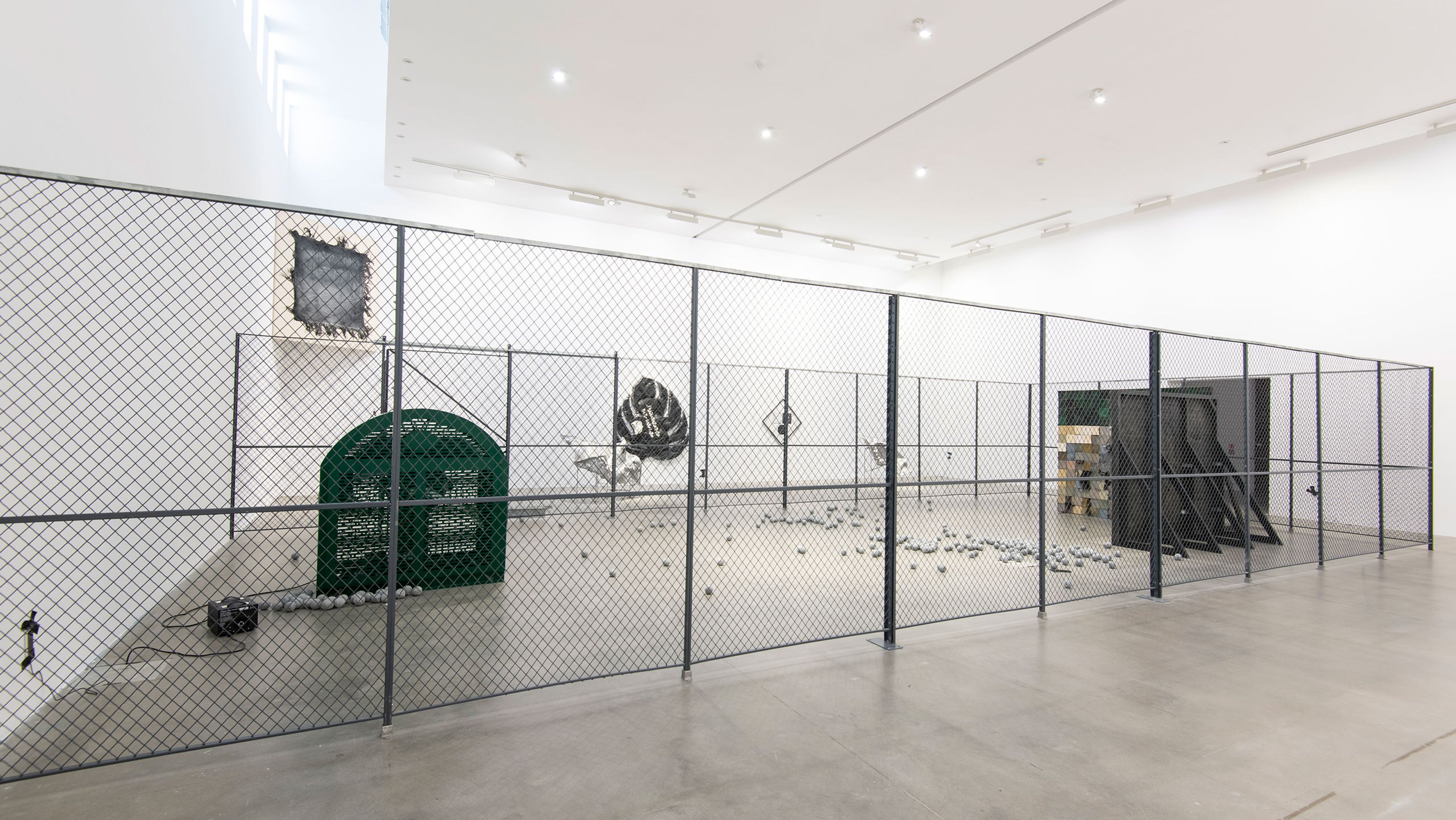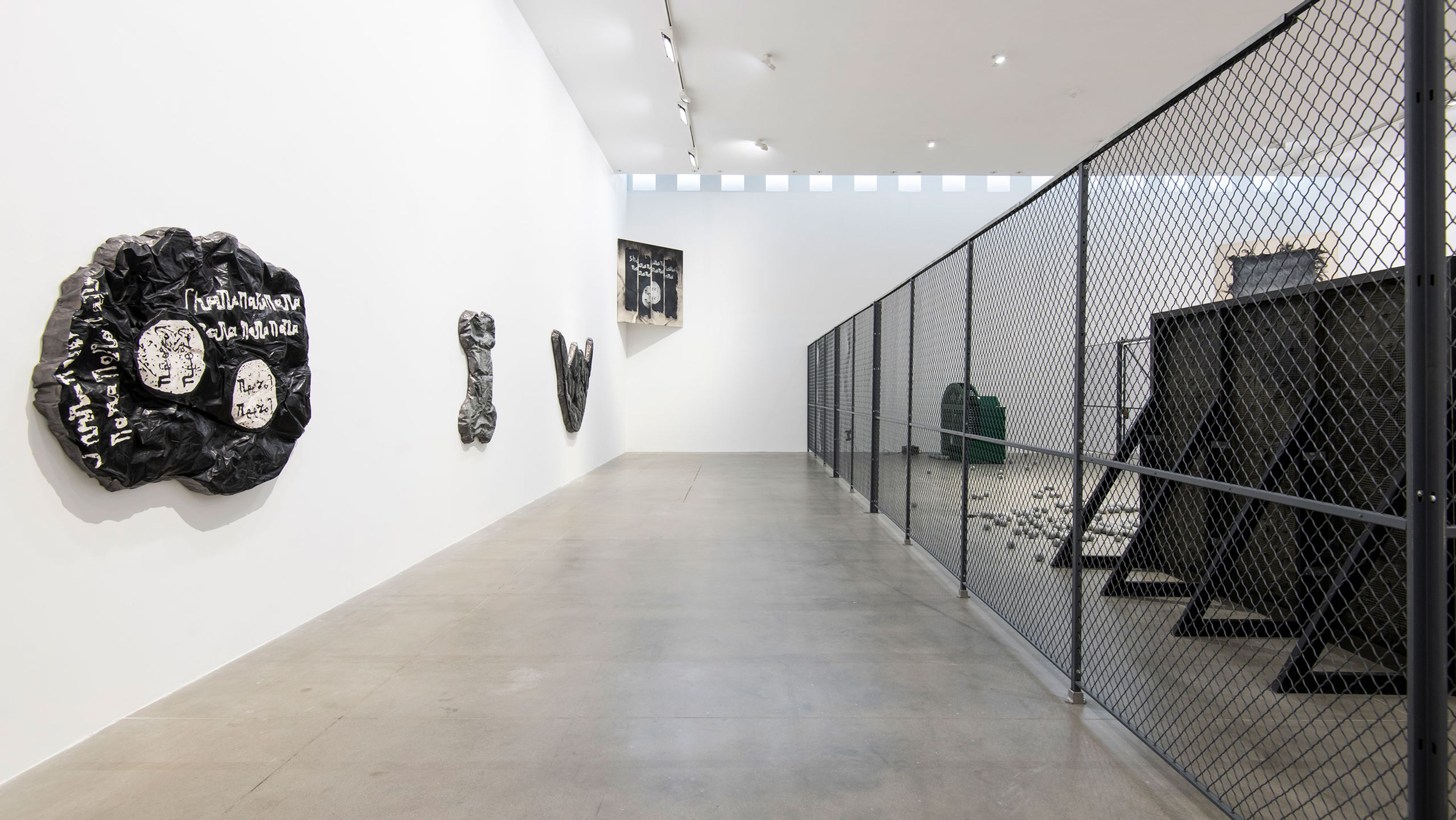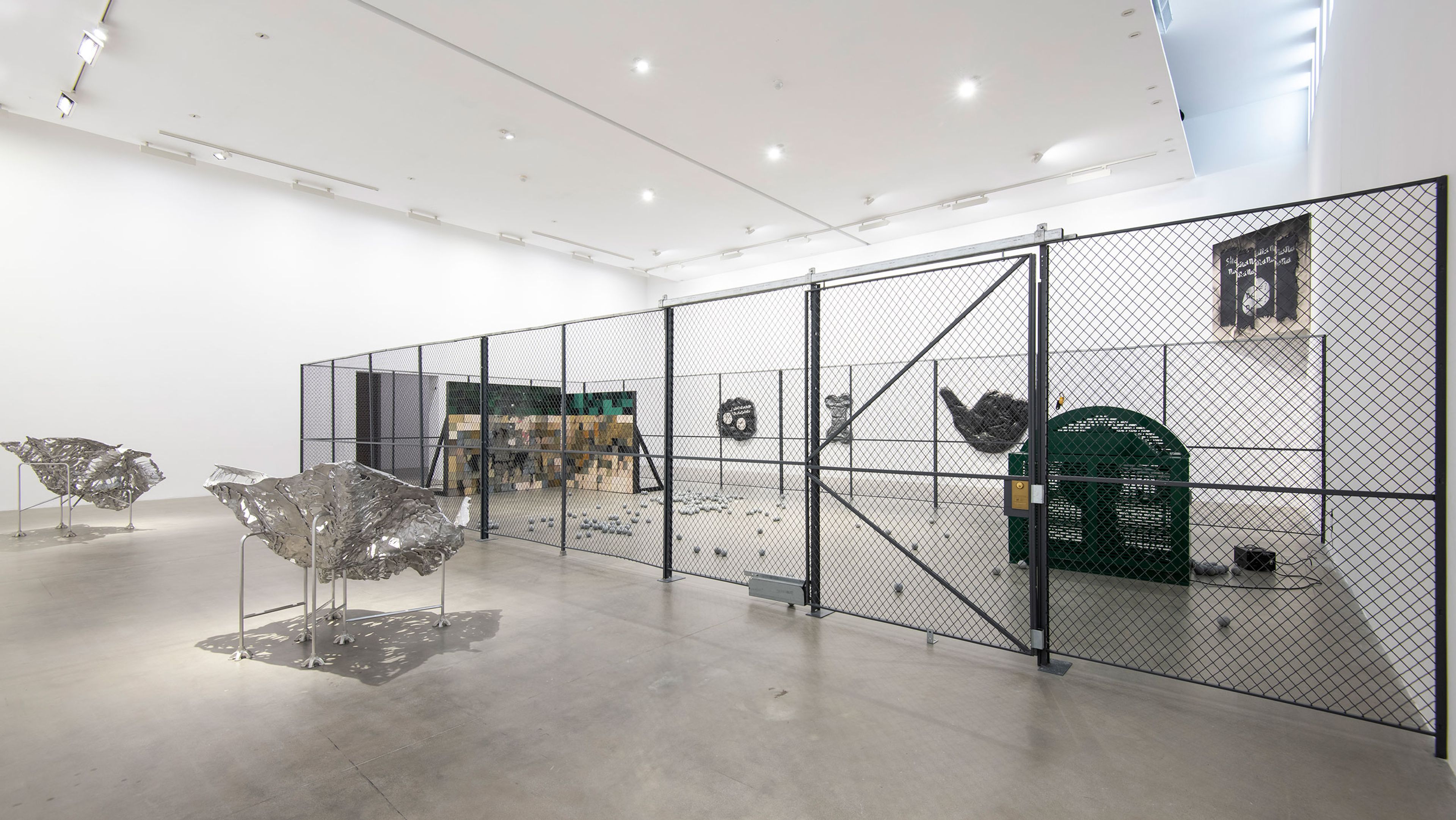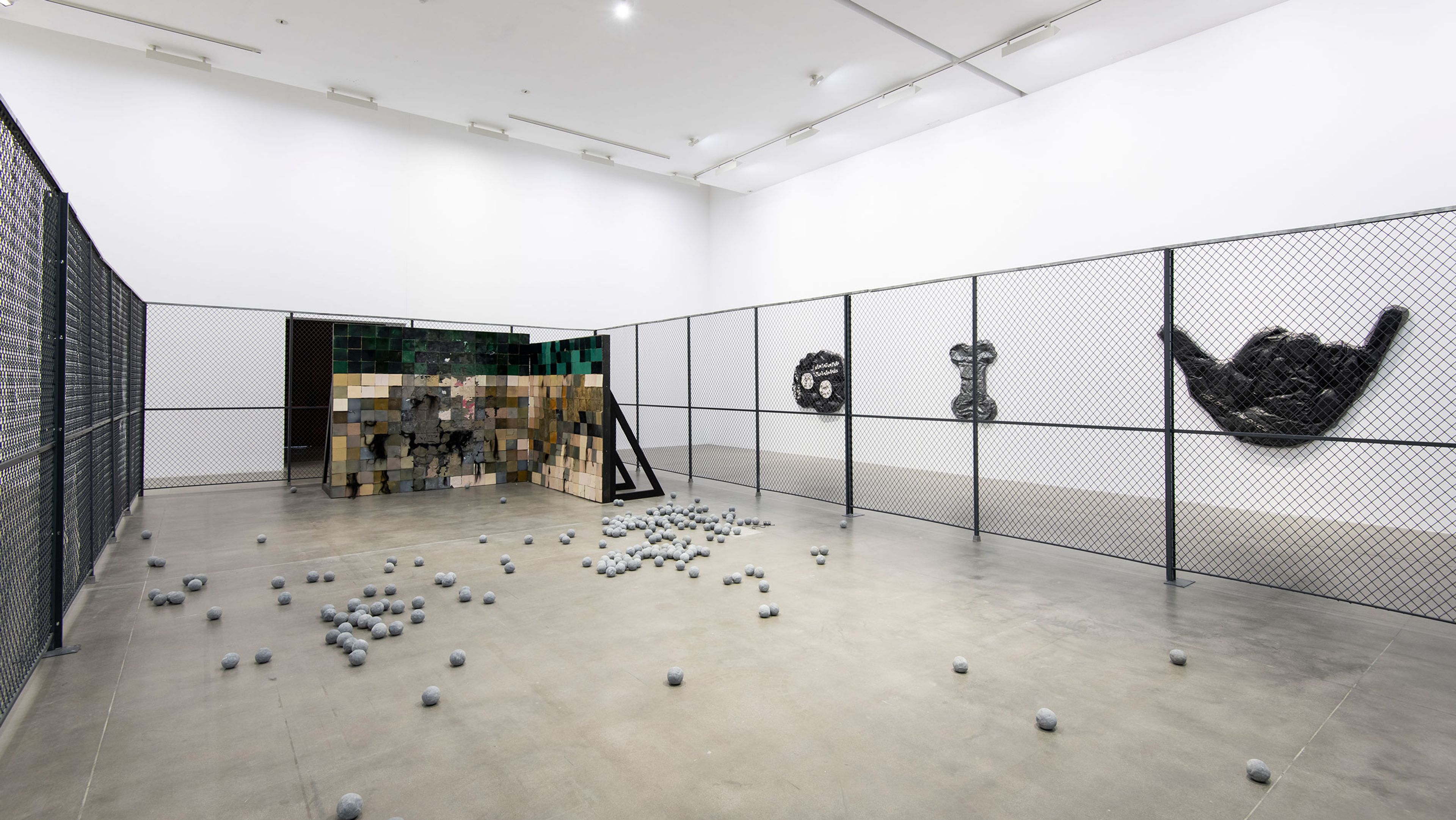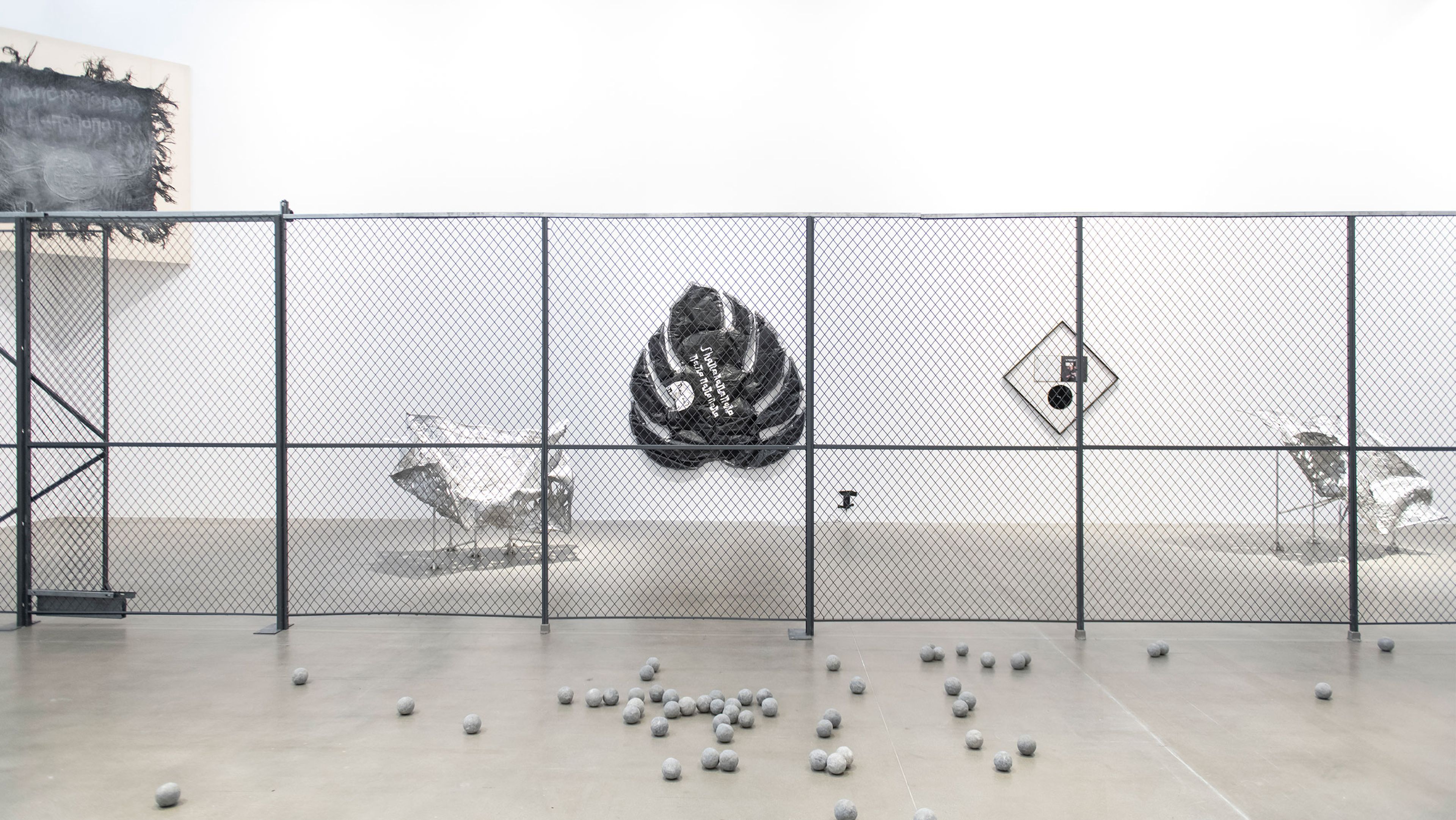Fondazione Sandretto Re Rebaudengo, Turin
November 2018
November 2, 2018–March 31, 2019 Andra Ursuţa (Romania, 1979) creates works which tackle controversial, thorny issues using a language with a register ranging from grotesque to tragicomic and satirical. She often draws from reality, true stories, or personal memories to address cultural stereotypes, personal relationships, and the social phenomena of violence, both physical and symbolic. Vanilla Isis takes an irreverent look at the real and pretend extremisms manifest in contexts as disparate as terrorist groups and youth subcultures. Based on an analysis of the communicative strategies deployed by the Islamic State, whose internet-savvy appropriation of everything from computer games to Hollywood movie posters attracts vulnerable youths in the West, the show looks at how aesthetic trends migrate and are transformed or exploited to strange, unsettling effect. Riffing on the imagery used by Isis to attract followers, the works on view explore the mix of propaganda, seduction, and macho posturing that forms the recruitment language that Isis uses to speak to foreign audiences. It is the perspective of foreign, impressionable, and disaffected youth—the “vanilla” position—that the show focuses on, conjuring up a dark entertainment complex with its own music and sports equipment, where the playful and the bellicose, the recreational and the lethal, all become indistinguishable. The music is a cover of the Sex Pistols song “Anarchy” in the UK performed in the style of Isis anthems with highly processed, layered vocals; the display resembling sports equipment is Stoner (2013), a baseball-pitching machine modified to throw rocks at bruised fleshcolored tiled walls. Here the Isis flag, a faux-primitivist icon of contemporary anxiety, is recast in a series of absurdist pool floats that feature, instead of a proclamation of faith, a refrain from the Guns N’ Roses song “Welcome to the Jungle” from the album Appetite for Destruction: “Welcome to the jungle/ Watch it bring you to your / Shana… knees, knees / I wanna watch you bleed.” Language devolves into repetitive, meaningless vocalization, reduced to adorning deflated objects of leisure, dragging the lounger—or the viewer—straight to the bottom. The authority of the flag further unravels in the paintings in which it becomes the logo of the punk band Black Flag, designed by Raymond Pettibon, or simply disintegrates into a grey floating mist in the middle of a blank canvas. An even more advanced stage of deterioration is evidenced in two sculptures cast in aluminum that reshape frayed, molten, billowing casts of flags as chairs: decrepit flying carpets for traveling only in the imagination, or worse, for a flight with no return.
